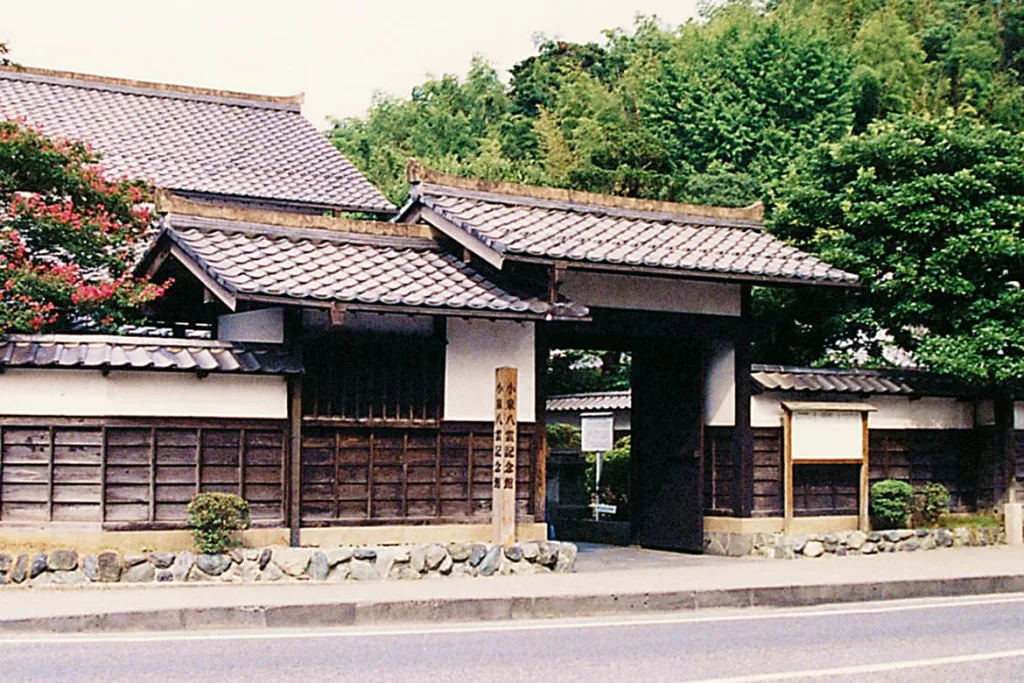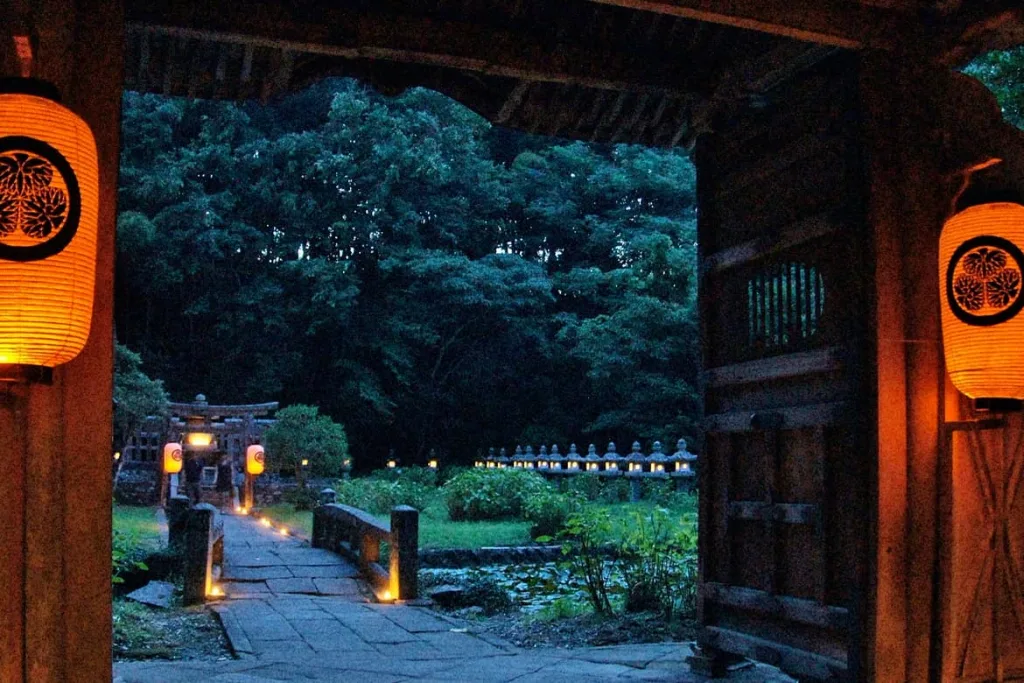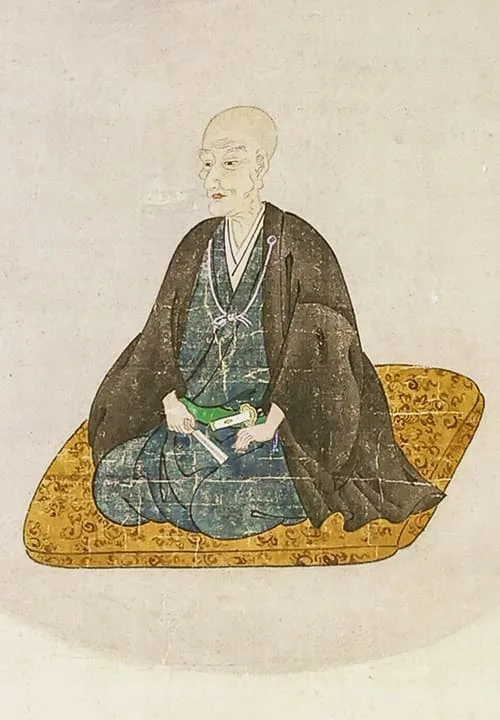About Gesshoji
Top / About Gesshoji
小泉八雲が愛した寺院
Lafcadio Hearn, the literary giant who held a deep affection for Japanese culture,
cherished Gesshoji and visited this temple many times during his life.

Lafcadio Hearn
Who Was Lafcadio Hearn?
Lafcadio Hearn, known in Japan as Koizumi Yakumo, was born in 1850 on the Greek island of Lefkada and raised in Ireland. At the age of 19, he moved to the United States, where he worked as a journalist and writer.
In 1890, drawn by a deep interest in Japanese culture, he came to Japan and was assigned as an English teacher at the middle school and normal school in Matsue, Shimane Prefecture. During his time there, he became deeply fascinated by Japanese customs and the everyday lives of its people, forming many meaningful connections.
Though he stayed in Matsue for only about one year and three months, he got married during this time and experienced many aspects of Japanese folklore and scenery that would later inspire his literary works.
After Matsue, he lived in Kumamoto, Kobe, and Tokyo, leaving behind a legacy of writings that reflect his deep appreciation and understanding of Japan.

Gesshoji and Lafcadio Hearn

During his stay in Matsue, Lafcadio Hearn actively engaged with the local community and deepened his understanding of Japanese culture. Living in a former samurai residence, he grew familiar with traditional Japanese elements such as tatami mats, shoji screens, and garden views. His writings detail frequent interactions with neighborhood children and shopkeepers, offering glimpses into daily life.
He also visited numerous shrines, temples, and cemeteries, showing great interest in the religious beliefs and customs of ordinary people. Hearn was especially moved by practices related to Buddhism and Shintoism, and the deep reverence for ancestors. These experiences would later become key themes in many of his literary works.

Throughout his life in Matsue, Hearn developed a deep interest in the appearance of temples and the faith of the people, and he recorded his impressions in his essay, "The Capital of the Land of the Gods." Matsue's historic temples and tranquil scenery strongly stimulated Hearn's sensibilities, and it was an important experience that deepened his understanding of Japanese culture.
These experiences were later utilized in his writings such as "Kokoro," "Gleanings from the Buddha's Field," and "Miscellaneous Records of Japan," and Matsue became an indispensable starting point for Hearn's creative work.
The Legend and Origins of the Great Turtle Memorial
The legend surrounding the giant turtle at Gesshoji Temple
conveys an interesting history to the present day,
combining ghost stories with

Lord Matsudaira Fumai — A Visionary Leader Who Cherished Tea and the Arts
Harusato Matsudaira, known posthumously as Lord Fumai, was the 7th lord of the Matsue Domain and a figure deeply connected to Gesshoji Temple.
He not only revitalized domain governance but also played a key role in promoting cultural pursuits, especially the art of tea.
His spirit and legacy live on in the cultural fabric of modern-day Matsue.

Who Was Lord Fumai?
Harusato Matsudaira, known as Lord Fumai, became the seventh lord of the Matsue Domain during the mid-Edo period, assuming leadership at a young age.
Fumai was also known for his commitment to both practical governance and spiritual culture, leaving a lasting impression not only as a ruler but as a cultured intellectual.
Lord Fumai as a Master of Tea
- Founder of the Fumai School
His cultural influence extended beyond tea to include poetry, calligraphy, and traditional crafts, instilling a refined sense of aesthetic in the town of Matsue.
Fumai’s Spirit in Present-Day Matsue
The cultural legacy of Lord Fumai lives on strongly in modern Matsue.
Today, the city is still known as a center of tea culture, where visitors can experience tea rooms and utensils connected to Fumai’s tradition.
Annual events such as the Matsue Castle Grand Tea Gathering held in the autumn continue to share his spirit with residents and guests alike.
The Mausoleum of the Lords of Matsue
A Treasury of Cultural Heritage Preserving the Elegance of the Edo Period
Gesshoji Temple serves as the mausoleum of the successive lords of the Matsue Domain, preserving its rich legacy from the Edo period.
It is home to an extraordinary collection of cultural properties, including refined architecture and intricate carvings created by master artisans of the time.
Many artifacts connected to the lords have been carefully preserved, retaining the dignity and aesthetic of their era.
Here, we invite you to explore the historical and cultural significance of these invaluable treasures and the architectural beauty they embody.
History and tradition
Gesshoji Temple has long been preserved as the mausoleum of the successive lords of the Matsue Domain.
Its enduring cultural heritage and the many stories connected to the domain’s rulers continue to breathe life into the temple’s timeless atmosphere.
Gesshoji has been protected for 400 years as the mausoleum for the nine generations of the lord of Matsue Domain.
It is filled with cultural assets that convey history from the Edo period to the present, as well as anecdotes related to the feudal lords.
Art and treasures
Artifacts once cherished by the lords of Matsue and exquisite works created by master artisans of the Edo period are on display.
By experiencing these precious cultural treasures, you can feel the living spirit of history.
There are many works of art created by master craftsmen of the Edo period.
By experiencing the precious cultural assets that color history, you can feel the life of that time.
Architecture
The refined craftsmanship of Edo-period artisans is beautifully embodied in the temple’s architecture.
Structures such as the mausoleums and temple gates have withstood the passage of time, preserving the dignity and elegance of the era to this day.
The charm of Edo architecture is crystallized by the exquisite techniques of master craftsmen.
The mausoleums and temple gates and other buildings have passed through time to convey the dignity of the time to this day.
Garden
A serene garden that changes with the seasons, offering a quiet retreat from the bustle of daily life.
Surrounded by historic scenery, it is a place where visitors can enjoy a moment of calm while savoring traditional sweets.
A silence garden that changes with each season.
This is an enjoyable space where you can relax and enjoy a relaxing moment with tea and sweets in the historic scenery.
Others
Gesshoji is home to a rich variety of cultural treasures and historical remnants that go far beyond its role as a mausoleum.
Here, we invite you to explore the many unique sights and experiences that make this temple truly special.
A remnant of the diverse cultural properties and history that live at Gesshoji.
We will introduce you to some of the attractions that are filled with the unique charms of Gesshoji, which extends beyond the mausoleum.
